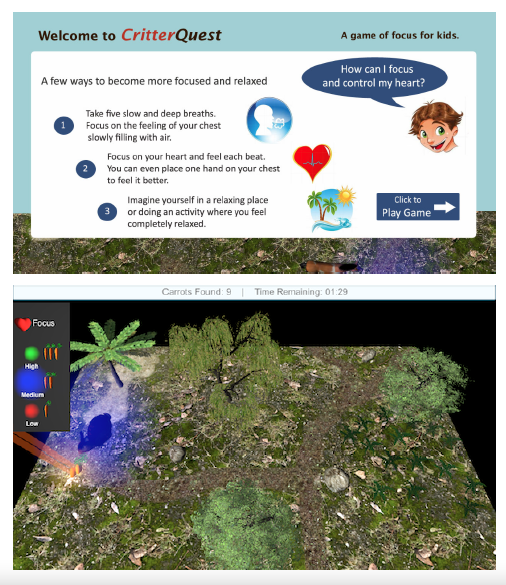Games for Science Learning
What makes for an engaging game-based learning experience? In order to understand how to stimulate engagement and positive affect around the use of bioinformatics (software and tools for managing large biological datasets), I led the design and development of the game MAX5, a computer game where players analyze biological data to stop a lethal influenza outbreak.

The Design: I led co-design workshops with area students to develop prototypes for in-game software tools and levels. In an iterative design process, we conducted playtesting sessions, interviews, surveys, and collected in-game data on tasks, locations, and levels completed. In-game data was combined with ethnographic observations and video analysis of gameplay.
My Role: Lead developer and game designer (programming in C# & JavaScript using the Unity3D game engine). Research lead for the experimental design, data collection, and analysis.


Click to View the Max5 Trailer
To find out more and to beta test MAX5 visit gamestem.com
Research Publications:
Game Design for Bioinformatics & Cyberinfrastructure Learning: A Parallel Computing Case Study. Perry. D., Robinson, J., Cruz, S., Aragon, C., Chowning, J., Peters, M. Concurrency: Practice and Experience, (2014). Article Abstract.
Diverse Player Experiences in the Design of Science Games for Bioinformatics. Perry, D., Lynch, A., Joshi, A., Hellman, K., Robinson, J. J., Oyadomari, A., Richtarik, M., Aragon, C. R.,. 1st Chilean Conference on Human-Computer Interaction, ChileCHI 2013, Temuco, Chile (Nov. 2013). PDF.
Human Centered Game Design for Bioinformatics and Cyberinfrastructure Learning. Perry, D., Cruz, S., Aragon, C., Peters, M., & Chowning, J. Proceedings of the 2nd Conference of the Extreme Science and Engineering Discovery Environment. ACM (2013). Best Student Paper Award and Best Training, Education & Outreach Paper Award. PDF.
Games for Health
I’m also interested in how health informatics can be integrated into games and game-like interfaces to motivate wellness and healthy behaviors. I’ve co-authored a chapter on the topic appearing in the book The Gameful World (MIT Press, 2014). I’ve also conducted research on biofeedback games while a researcher at UC Berkeley’s Center for Next Generation Teaching and Learning.

I worked with Ian McDowell to design the biofeedback game CritterQuest , using Heart Rate Variability (HRV) as a method of focusing student attention and decreasing stress. In the game, players select an animal to collect food in a forest, with the amount of food dependent on their ability to control their HRV.
The game offers a tool for K-6 children to gain critical skills in focus, attention and relaxation that have been shown to be important for character development, behavioral management, and learning.
We found that 89% of students were able to achieve a Heart Rate Variability score conducive to strong levels of attention and relaxation (within two minutes of gameplay). We received the UC Berkeley iSchool’s James R. Chen Award for this research.
My Role: Interface design and graphic design, conducted player testing sessions, analysis of biofeedback data.